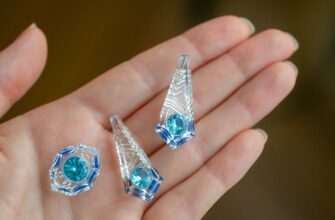At a time when buying a graphics card to build a desktop PC is becoming an increasingly difficult mission, gaming laptops are becoming more and more attractive choices. I note right away that yes, a desktop video card is guaranteed to be more powerful than its mobile version for a laptop, but the days of a two or three times difference in performance are long gone.
The MSI Katana laptop I got my hands on has a mobile NVIDIA Geforce RTX 3070, which is only 20-25% slower than the desktop RTX 3070, looking ahead, but consumes significantly less power. We will talk about all this a little later, but let’s start the review, as usual, with the appearance.
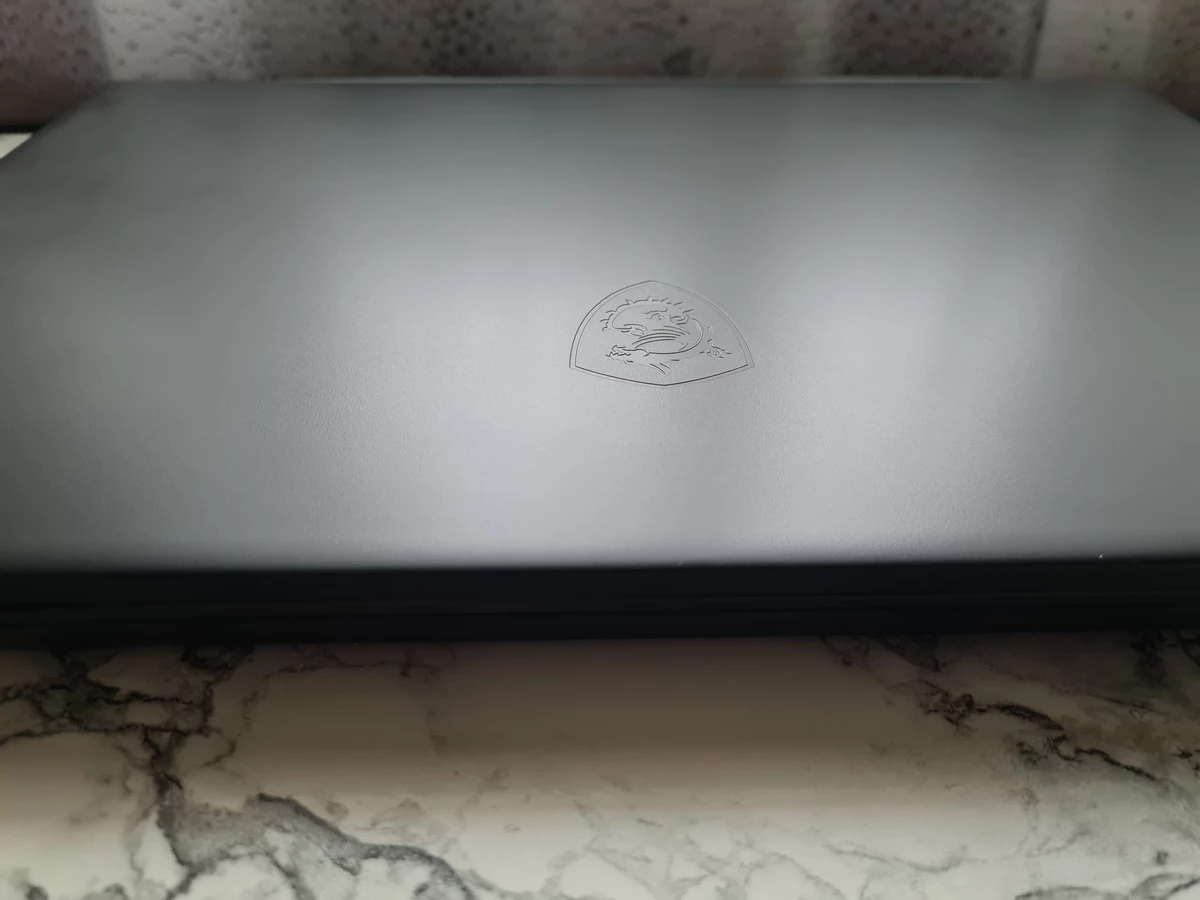
The MSI Katana GF66 doesn’t scream about its gaming nature, but only while it’s closed. The body is made of plastic, it is very well assembled, nothing creaks anywhere, does not play or bend. The top cover is flat, without RGB lighting or any color elements, but engraved with the MSI logo. The bottom lid of the laptop has a huge number of cooling grilles, which the laptop definitely needs, yet its inner world is very rich.
The dimensions of the device are 359 x 259 x 24.9 millimeters, and the weight is 2.25 kilograms, which makes it also quite portable
When you open the laptop lid (which, by the way, can be done without any problems with one hand), we are greeted by a 15.6-inch IPS-panel with a resolution of 1920 × 1080 pixels and a vertical frequency of 144 Hz. Directly above it is a 720p webcam. The video recording quality of this camera is sufficient for video calls, as well as for the operation of any FaceRig; I would definitely not recommend recording myself for video with it.
The screen, by the way, is matte, and therefore the image is clearly visible under any lighting conditions, there will be no glare on it. This, however, slightly affects the vividness of the picture, but nothing critical. The colors are pleasant, but the panel is 8-bit (AU Optronics B156HAN08.0), so you shouldn’t wait for HDR. The brightness of the screen itself is declared at 350 nits. The viewing angles are maximum, but at the extreme angles the image brightness still suffers a little.
The laptop’s keyboard is full-fledged, and MSI managed to fit even the NumPad here, which not everyone needs, but personally I am very pleased to have one. I do not know why, but I cannot retrain myself to set numbers using the top line under the F-kami. The keyboard also has a red backlight, and we remember that red means fast.
Typing on the keyboard is extremely convenient (I generally love membrane keyboards for typing), the key travel and tactile response from pressing are clear and pleasant. After my full-size mechanics, I didn’t have to get used to the keyboard layout at all, which is also a plus. I fix the sound of typing on the keyboard.
Directly below the keyboard is the touchpad, which is off-center to the left and at the same time rather small. It seems to me that the touchpad could have been made larger, there is still room, but I’m not an MSI engineer, they know better. By the way, this arrangement of the touchpad allows you not to press on it while typing (at least to me).
Port selection includes a proprietary circular charging connector and two USB Type-A ports on the left, plus Gigabit Ethernet, HDMI 2.0 (4K60Hz), USB Type-C, USB Type-A, and 3.5mm headset combo jack on right. The complete power adapter, by the way, is 180-watt.
It’s time to talk about the “stuffing” of the MSI Katana GF66. The laptop that came to me for review has:
- Processor: Intel Core i7-11800H.
- Video Card: NVIDIA GeForce RTX 3070 Laptop (95W) with 8GB VRAM.
- RAM: 16GB DDR4-3200 Dual Channel
- Storage: 512GB NVMe SSD.
- Wireless connections: Wi-Fi 6 802.11ax and Bluetooth 5.2.
Let’s not beat around the bush and go straight to the tests. Let’s start, of course, with synthetics. Processor benchmarks include CPU-Z and Cinebench R23.
Scenes prepared by 3DMark were benchmarks for the video card. The figures show that we have one of the most productive mobile video cards on the market, but we will make the final conclusions about its capabilities after the games.
Further, the memory test in AIDA64 and the drive in CrystalDiskMark.
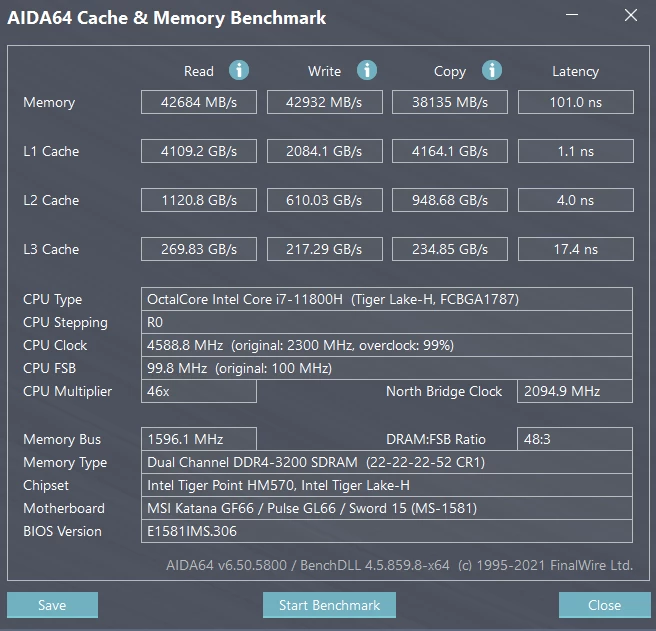
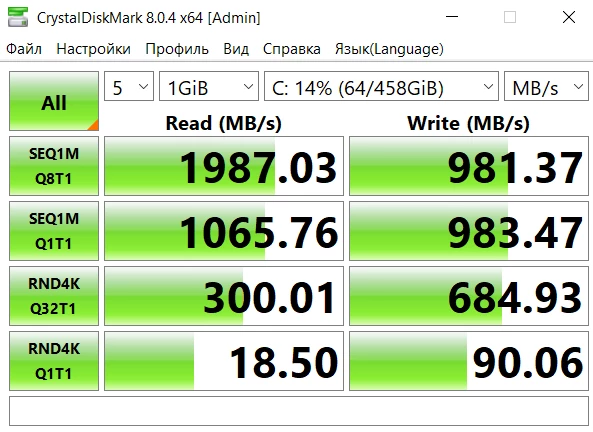
As for the Internet connection, here are the speed measurements at a gigabit Internet tariff via Wi-Fi 6.
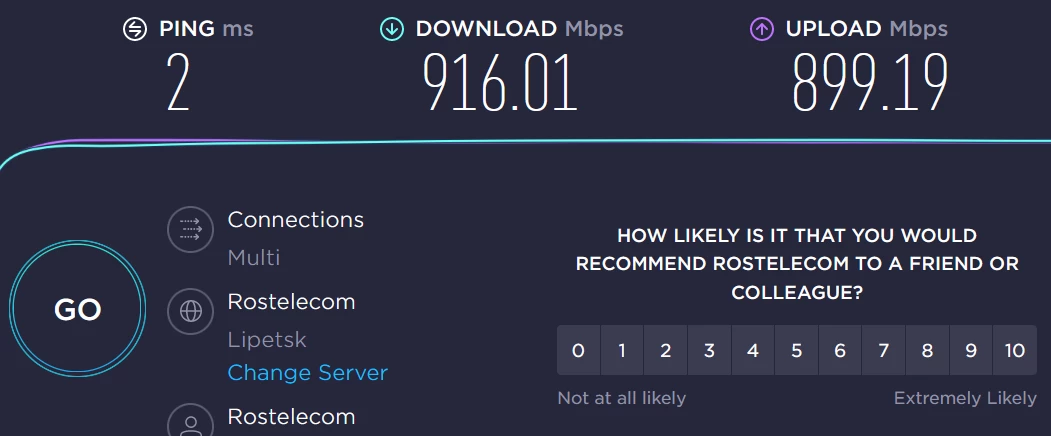
And now what many are most interested in is the laptop tests in games. They were carried out in 1080p (built-in screen), as well as 4K (external monitor via HDMI). I will not comment on anything yet, all the results on the charts are in front of you.
Indicators, in my opinion, are more than worthy for comfortable gaming at home or on a trip. It goes without saying that for games, charging should always be at hand, because when the battery is fully charged, it will work for a little more than an hour. However, about the battery life a little later, but for now the temperatures.
In the basic mode, the processor reaches 97 degrees during the AIDA64 stress test and starts throttling. Yes, the load is not realistic, but these numbers are worth keeping in mind. In games, the processor heats up to 89-90 degrees, which is quite normal and safe values for modern hardware. If you turn the speed of the cooling system fans to the maximum, then the temperatures will drop by an additional 6-7 degrees.
The video card warms up to 86-88 degrees in FurMark, and the fan speed cranked out by 100% helps it to cool down to 71-73 degrees.
The noise level in normal mode when games are running from a 60-centimeter distance reaches 37 dBa, and when the cooling system is operating at full capacity it reaches 45 dBa. I would recommend playing with headphones.
Battery operation
As I said earlier, you should expect a little over an hour of battery life from a fully charged battery during heavy gaming. “Bank” here, by the way, is four-section and has a volume of 90 W / h.
If the laptop is engaged in simpler workloads, for example, showing YouTube videos over Wi-Fi, then it will be enough for almost 5 hours of battery life. In typewriter mode, the operating time is extended by another hour and is 6 hours. Downloaded movies from internal media are played on a full charge for about 5 hours 30 minutes.
Outcomes
The MSI Katana GF66 is a good laptop that provides the user with very impressive performance for gaming and work for the price of one RTX 3070 desktop and Ryzen 5 or Core i5 processor (155k rubles). At the same time, the device is well assembled, received a good screen and is quite portable due to the weight of just over two kilograms. I only want to find fault with the noisy cooling system and the rather average built-in speakers, but the rest of the device is decent.
MSI Katana GF66 has other versions with weaker graphics cards and processors. It seems to me that the version with i5-11400H and RTX 3060 (95 W) will be an even more interesting solution, and it will also cost 105 thousand.


